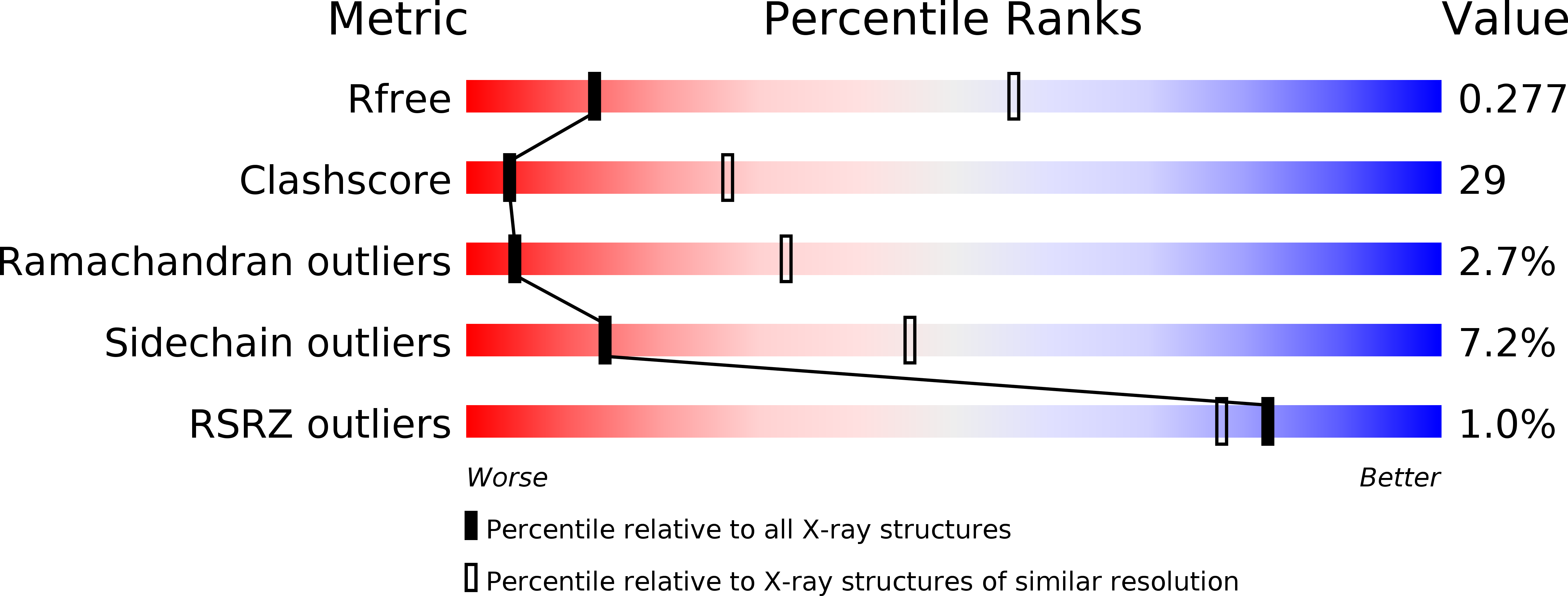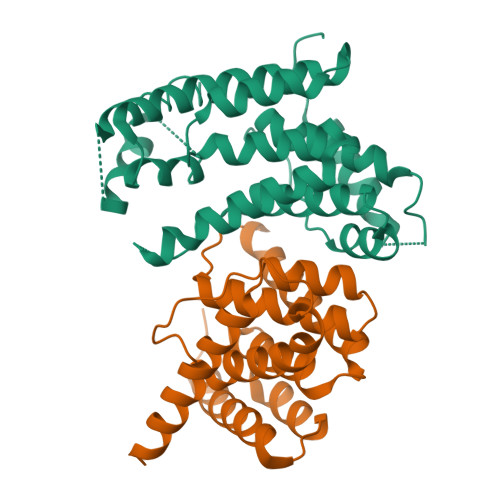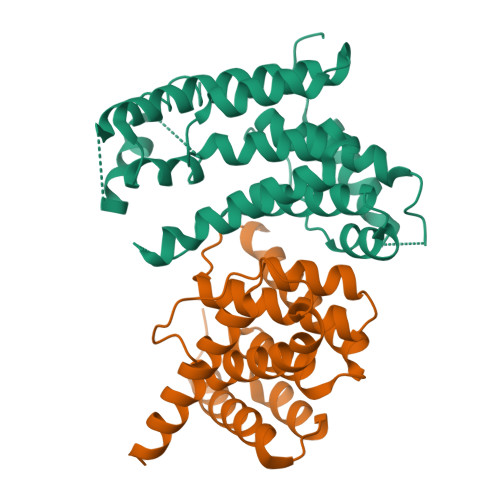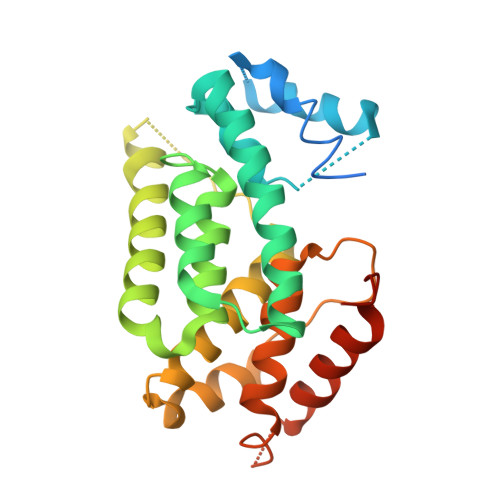Complex structure of the fission yeast SREBP-SCAP binding domains reveals an oligomeric organization
Gong, X., Qian, H., Shao, W., Li, J., Wu, J., Liu, J.J., Li, W., Wang, H.W., Espenshade, P., Yan, N.(2016) Cell Res 26: 1197-1211
- PubMed: 27811944
- DOI: https://doi.org/10.1038/cr.2016.123
- Primary Citation of Related Structures:
5GPD, 5GRS - PubMed Abstract:
Sterol regulatory element-binding protein (SREBP) transcription factors are master regulators of cellular lipid homeostasis in mammals and oxygen-responsive regulators of hypoxic adaptation in fungi. SREBP C-terminus binds to the WD40 domain of SREBP cleavage-activating protein (SCAP), which confers sterol regulation by controlling the ER-to-Golgi transport of the SREBP-SCAP complex and access to the activating proteases in the Golgi. Here, we biochemically and structurally show that the carboxyl terminal domains (CTD) of Sre1 and Scp1, the fission yeast SREBP and SCAP, form a functional 4:4 oligomer and Sre1-CTD forms a dimer of dimers. The crystal structure of Sre1-CTD at 3.5 Å and cryo-EM structure of the complex at 5.4 Å together with in vitro biochemical evidence elucidate three distinct regions in Sre1-CTD required for Scp1 binding, Sre1-CTD dimerization and tetrameric formation. Finally, these structurally identified domains are validated in a cellular context, demonstrating that the proper 4:4 oligomeric complex formation is required for Sre1 activation.
Organizational Affiliation:
State Key Laboratory of Membrane Biology, Beijing 100084, China.


















